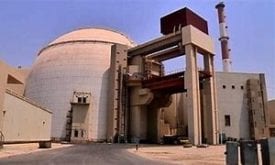Radiofarda – Iran’s tax collection in the first quarter of the current Iranian calendar year (beginning March 21) shows a 28% increase compared with the same period in the previous year, Iran’s Minister of Economy has claimed.
Without providing details, Farhad Dezhpasand said on Tuesday, June 25, the government managed to collect 240 trillion rials (approximately $2 billion based on free market rates) of tax revenues in the first quarter of the current year.
Earlier on June 8, the minister had also claimed the country’s annual tax income plan came true by 97 percent in the last Iranian fiscal year, which is hard to imagine given an economy in recession since at least mid-2018.
While the Islamic Republic is under the U.S. sanctions, suffering from a deep recession, and experiencing a significant drop in its foreign trade, Dezhpasand’s claims are in sharp contrast with the statistics presented by the Central Bank of Iran (CBI).
Iran heavily depends on oil income to provide for government budget. Oil exports have virtually stopped because of U.S. sanctions and now tax revenue is what can be regarded as the only other major source of income.
Although the CBI has not filed any report on the governmental budget since last November, its statistics for the first quarter of the previous year shows that the government only collected 62% of its annual tax plan./**/ /**/ /**/ SEE ALSO:
Iran Reports A Huge Drop In GDP As Sanctions Halt Oil Exports
Despite Dezhpasand’s encouraging comments, the latest report by Statistical Center of Iran’s (SCI) shows that Iran’s gross domestic product, including oil production, shrank 4.9 percent in the fiscal year 2018-19 compared with the year before, according to
The latest report published on SCI’s website on June 16 showed that Iran’s overall GDP figure stood at 7,130 trillion rials ($54 billion at current market exchange rates) for the Iranian calendar and fiscal year (March 21, 2018-March 21, 2019).
The production of the two main sectors of industry and agriculture contracted 9.6 percent and 1.5 percent, respectively, while the services group remained almost unchanged. Economic growth, excluding oil production, stood at -2.4 percent, the report added.
For the second consecutive year, Iran’s economy is expected to shrink as inflation could reach as high as 40 percent, reported Reuters in April, citing an International Monetary Fund senior official. Iran’s economy shrank 3.9 percent last year, according to the IMF, which predicts it will shrink 6 percent this year.
Furthermore, according to the IMF, Iran’s share in the world economy since the downfall of the pro-West monarch, Shah Mohammad Reza Pahlavi, four decades ago, has been almost halved from nearly 2 percent to 1.1 percent.
The figure is expected to drop further, reaching 1 percent in the coming years. In the meantime, the World Bank estimates that Iran’s economic growth will be soon the lowest in the world, only slightly ahead of Nicaragua. The IMF says that only Iran and Sudan are expected to have negative economic growth in 2019.
After dropping the Joint Comprehensive Plan of Action (JCPOA) or Tehran’s nuclear deal with world powers in May 2018, Washington imposed two consecutive batches of sanctions on Iran, aiming to push its oil exports to zero and severely limit its international banking and trade.
 Shabtabnews In this dark night, I have lost my way – Arise from a corner, oh you the star of guidance.
Shabtabnews In this dark night, I have lost my way – Arise from a corner, oh you the star of guidance.


